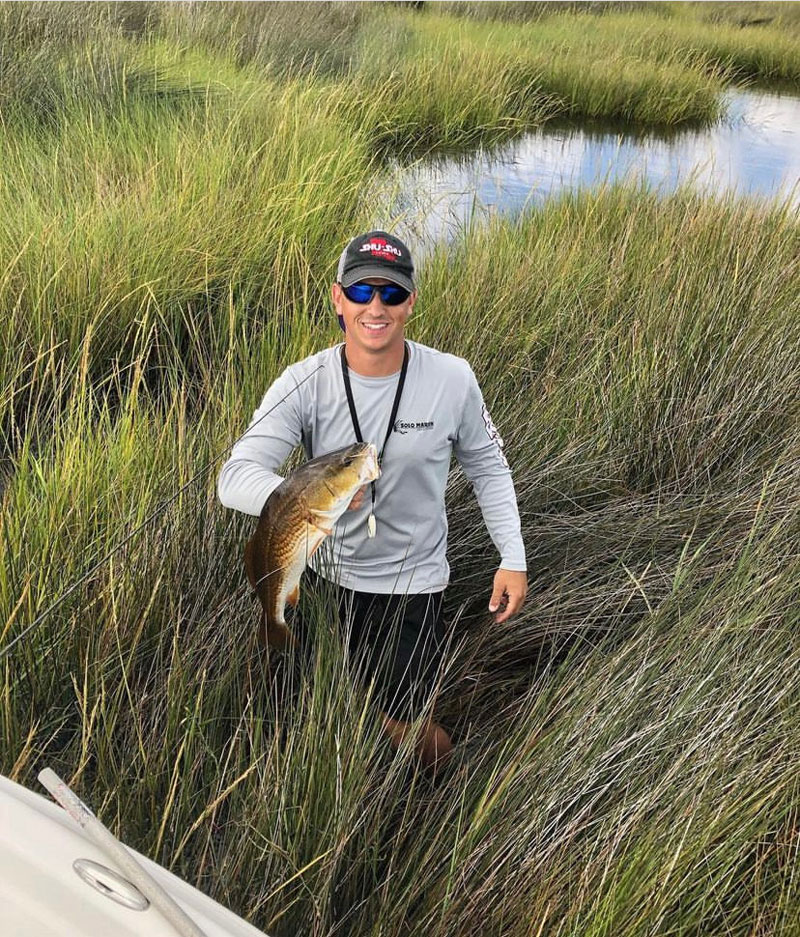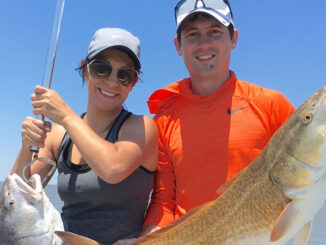Trenasse is a cajun word describing a small ditch through the marsh used as a shortcut by fishermen and trappers. In South Louisiana, trenasses are a key component to the roadmap that makes up our prized wetlands.
At first glance, these sloughs may not look like they offer much to an outsider, but locals know that it’s these small cuts through the marsh that often lead to the most productive and memorable fishing trips.
A ditch fisherman is born
Tyler Jones of Bogulusa is one of these locals. Jones grew up on the Northshore fishing the marshes of Lake Pontchartrain and Lake Borgne. Jones said he can remember the first time he caught a redfish in a trenasse that was no wider than the length of his fishing rod.
“I remember it like it was yesterday. My dad brought me back into a duck pond looking for some redfish,” Jones said of a trip to the Biloxi Marsh. “I saw something pushing a wake through one of the cuts that emptied into the pond and casted at it. After an explosion and a five minute battle, I was hooked!”
From there, the 16-year-old made every attempt to fish skinny water.
“I toted around a kayak for a while, but got tired of dealing with the wind so I bought a boat,” he said.
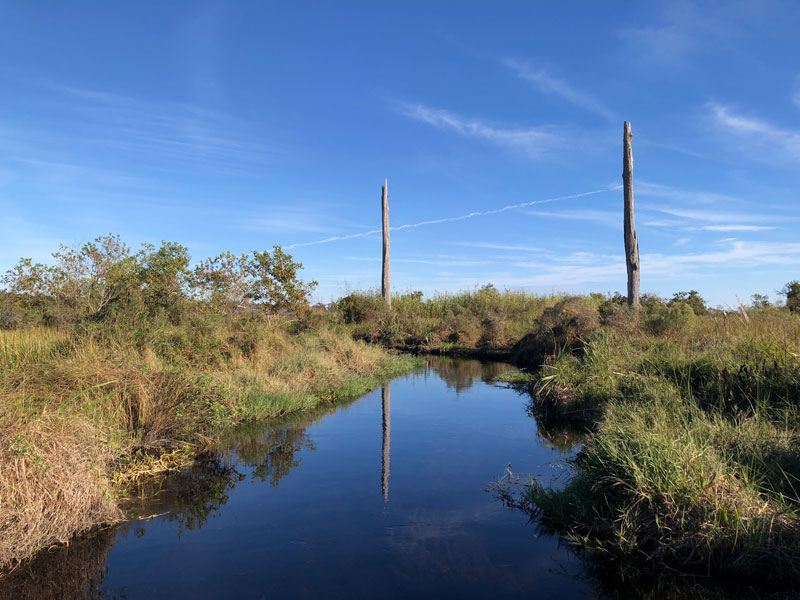
At age 25, Jones bought a Archercraft Poling Skiff with a center tower and platform he used to sight fish. Today, Jones fishes trenasses almost exclusively and said he has learned to appreciate the amount of life these narrow ditches contain.
“Just about every fish that I see in South Louisiana, I’ve caught in a trenasse. In addition to redfish, speckled trout, and bass, Jones has seen giant black drum feeding with their backs out of the water and a bull shark.
“Yeah that dorsal fin sticking out of the water in a 3-foot ditch will get your attention alright,” he said.
Hopedale fishing
Every season brings something new to the marsh and while springtime is his favorite time to hunt redfish in the trenasses, Jones said the colder weather has turned these narrow cuts into bass reservoirs. Jones has been fishing Hopedale and said the bass fishing is on fire in the marsh. He uses a Marsh Craw made by Shu-Shu Lures on a weighted swimbait hook.
“It’s a versatile lure that lets me fish on the bottom, or when the fish are real fired up, I’ll run it across the surface like a buzz bait,” he said.
As the temperatures drop, the bass empty out of the shallow duck ponds into the deeper trenasses. Jones said overcast days with a falling tide is his favorite time to fish for bass in the marsh.
Trenasse traffic
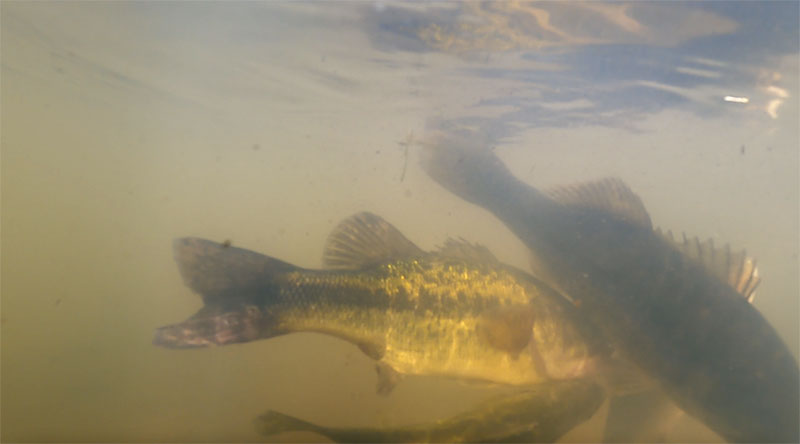
After speaking with Jones I found myself with that all too familiar urge to use my underwater camera to see just how many species use these tranasses. My plan was to sink my waterproof camera in the middle of a narrow trenasse located near the mouth of Bayou Cane and Lake Pontchartrain.
The cut starts at a large duckpond and winds approximately 350 feet through the marsh, emptying into Bayou Cane. The narrow waterway through the marsh is a well known community hole with plenty of baitfish, shrimp, crabs, bass and redfish, so I felt confident that something would trigger the motion sensor on my underwater trail cam.
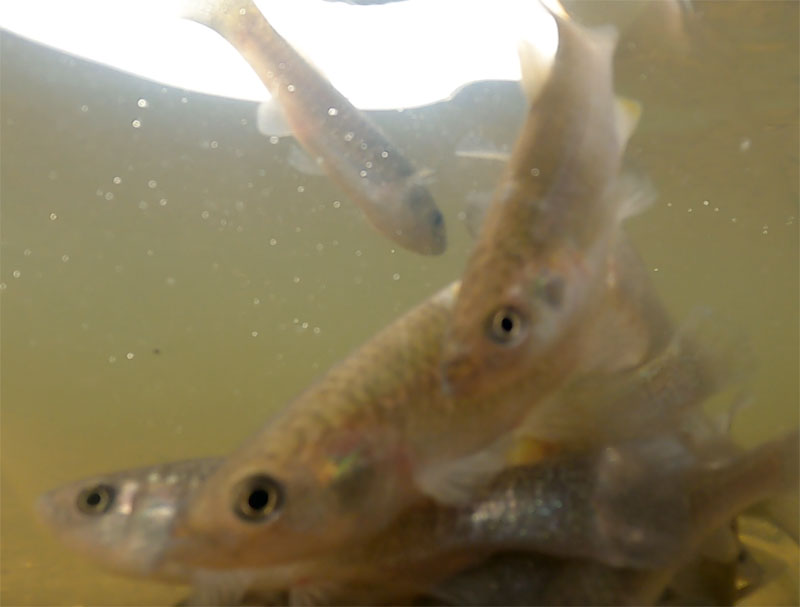
With sunrise being at 7:08 a.m., I launched my boat early and was able to plant the camera at the mouth of the trenasse just as the sun came up. After leaving the camera I started fishing nearby and waited for photo notifications to appear on my phone. It didn’t take long for the first set of snapshots to appear. It was a school of cocahoe minnows making their way out of the trenasse.
As the first school passed, another came by and I became enthralled with the screen in front of me. As the third school of cocahoe’s swam past the camera, I caught a glimpse of another object behind them. It was a bass in hot pursuit. After 15 minutes of monitoring my phone, I knew that my fishing trip was over as I set down my rod to monitor the incoming photos.
At the end of the day the camera collected 467 photos from a single trenasse that was alive with activity. Among the photos I collected still frames of shrimp swimming by, cocahoe minnows, and even two crabs battling over a piece of baitfish. But the overwhelming majority of the photos were of bass swimming in and out of the small trenasse with a few of them chasing shrimp across the surface.
Jones’ claims of the marsh being alive with bass right now were dead on and the footage that I collected confirmed that these trenasses are indeed the roads used by many species that make up the South Louisiana marsh.
